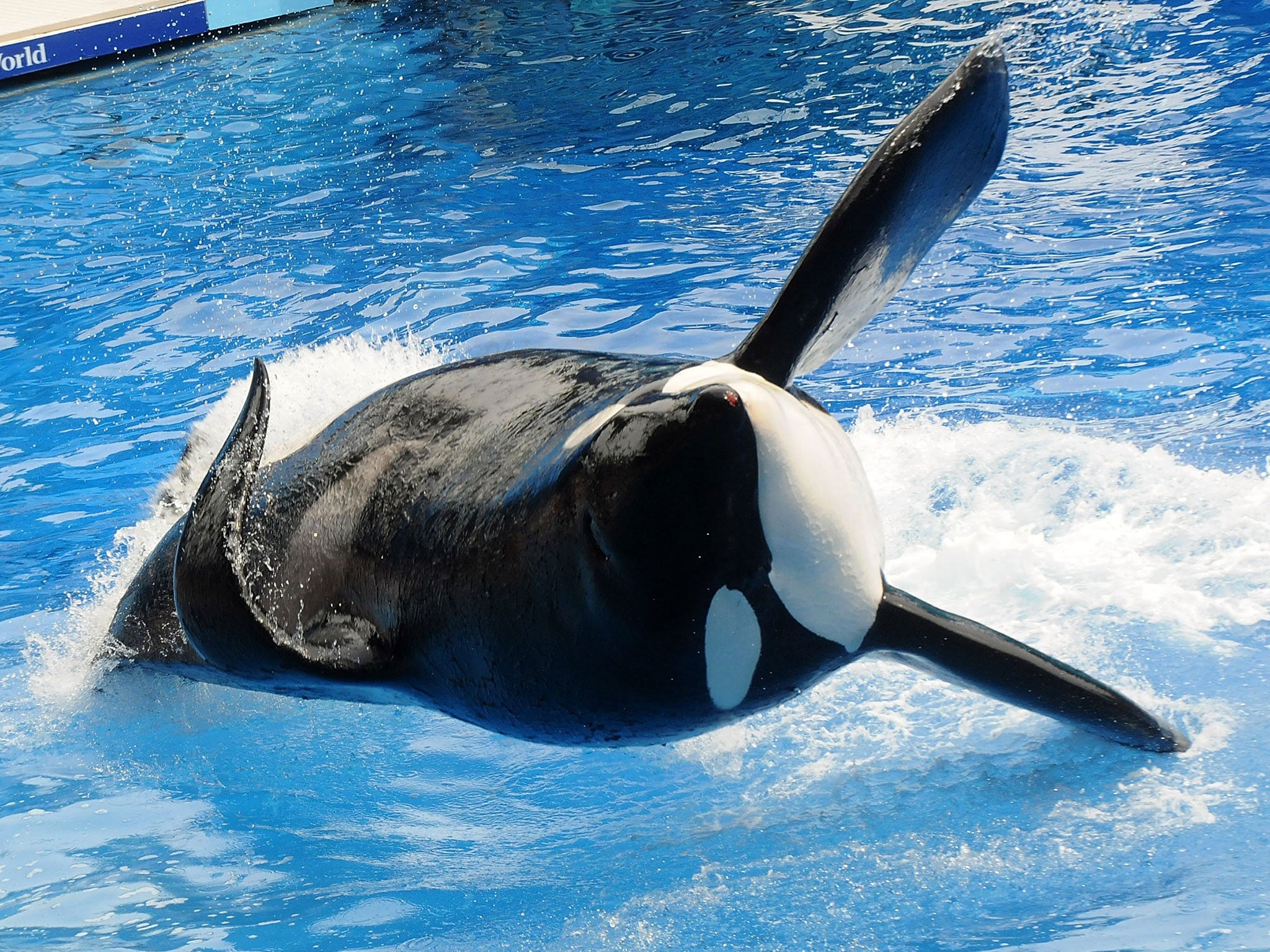Tilikum dead: orca that inspired ‘Blackfish’ documentary on Seaworld dies
The killer whale was thought to be about 36 years old, and became famous after being involved in the death of one of his trainers

Your support helps us to tell the story
This election is still a dead heat, according to most polls. In a fight with such wafer-thin margins, we need reporters on the ground talking to the people Trump and Harris are courting. Your support allows us to keep sending journalists to the story.
The Independent is trusted by 27 million Americans from across the entire political spectrum every month. Unlike many other quality news outlets, we choose not to lock you out of our reporting and analysis with paywalls. But quality journalism must still be paid for.
Help us keep bring these critical stories to light. Your support makes all the difference.
Tilikum, the killer whale that inspired the film Blackfish after killing his trainer at SeaWorld, has died.
The orca had been the centre of the documentary, which criticised SeaWorld for its treatment of Tilikum and the killer whales that followed him.
Tilikum died on the morning of 6 January, SeaWorld said, “surrounded by the trainers, care staff and veterinarians”. He was thought to be around 36 years old at the time he died, and had been at SeaWorld for 25 years.
SeaWorld said that Tilikum’s age at his death was “near the high end of the average life expectancy for male killer whales”. The oldest killer whale known died this week and was thought to be around 105.
Blackfish showed the treatment of Tilikum and other orcas at SeaWorld. It showed how the company took the animals and forced them to perform in shows, and how that treatment had apparently led to the whales’ strange and violent behaviour.
The reaction to it was immediate and high profile. It led to condemnation from some of the world’s most famous celebrities and SeaWorld’s financial health plunged.
It also led to condemnation of other killer whale shows across the world.
The organisation made reference to the controversy that surrounded that film – which depicted Tilikum’s living standards and criticised the way he was treated – in its statement announcing his death.
“While today is a difficult day for the SeaWorld family, it’s important to remember that Tilikum lived a long and enriching life while at SeaWorld and inspired millions of people to care about this amazing species,” a statement read.
“Tilikum’s life will always be inextricably connected with the loss of our dear friend and colleague, Dawn Brancheau. While we all experienced profound sadness about that loss, we continued to offer Tilikum the best care possible, each and every day, from the country’s leading experts in marine mammals.”
Ms Brancheau was a trainer at SeaWorld who was taking part in a demonstration that also involved Tilikum. During the display, the whale dragged her underwater and killed her.
In addition to killing Brancheau in front of horrified guests in Orlando in 2010, Tilikum was involved in the deaths of a worker at a different marine park in 1991 and an Orlando tourist who was found on the whale’s back in 1999 after trespassing into its tank.
“From the moment he was taken from his ocean family, his life was tragic and filled with pain, as are the lives of the other animals who remain in SeaWorld’s tanks and exhibits,” said Lisa Lange, senior vice president for People for the Ethical Treatment of Animals (Peta) in a statement.
Tilikum was bred 21 times, with 11 of his offspring previously dying, Peta noted.
The film was released three years after Ms Brancheau’s death and suggested that the treatment of Tilikum in captivity had made him hostile towards humans.
SeaWorld said that it did not know why Tilikum had died and that it wouldn’t be able to say how until it had cut him open. But it is likely the result of an illness that he was being treated for in the weeks before his death, it said.
“The SeaWorld family is deeply saddened to announce that one of its most well-known orcas, Tilikum, has passed away,” the company said in a statement.
“Like all older animals, Tilikum had faced some very serious health issues. While the official cause of death will not be determined until the necropsy is completed, the SeaWorld veterinarians were treating a persistent and complicated bacterial lung infection. The suspected bacteria is part of a group of bacteria that is found in water and soil both in wild habitats and zoological settings.
“Tilikum’s veterinarians and caretakers delivered various treatment regimens over the course of this illness, which consisted of, among other things, combinations of anti-inflammatories, anti-bacterials, anti-nausea medications, hydration therapy and aerosolised antimicrobial therapy.”
Subscribe to Independent Premium to bookmark this article
Want to bookmark your favourite articles and stories to read or reference later? Start your Independent Premium subscription today.
Join our commenting forum
Join thought-provoking conversations, follow other Independent readers and see their replies
Comments